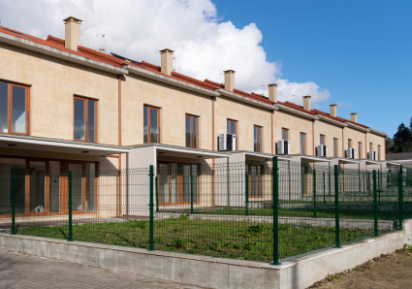License
The verb license or grant license means to give permission. The noun license or licence (British English, Indian English, Canadian English, Australian English, New Zealand English South African English) refers to that permission as well as to the document recording that permission. A license may be granted by a party (“licensor”) to another party (“licensee”) […]

Structure
Structure is a fundamental, tangible or intangible notion referring to the recognition, observation, nature, and permanence of patterns and relationships of entities. This notion may itself be an object, such as a built structure, or an attribute, such as the structure of society.

Light
Visible light (commonly referred to simply as light) is electromagnetic radiation that is visible to the human eye, and is responsible for the sense of sight. Visible light has a wavelength in the range of about 380 nanometres to about 740 nm – between the invisible infrared, with longer wavelengths and the invisible ultraviolet, with shorter […]


Light fixture
A light fixture (US English), light fitting (UK English), or luminaire is an electrical device used to create artificial light by use of an electric lamp. All light fixtures have a fixture body and a light socket to hold the lamp and allow for its replacement. Fixtures may also have a switch to control the […]

Lighting
Lighting or illumination is the deliberate use of light to achieve a practical or aesthetic effect. Lighting includes the use of both artificial light sources like lamps and light fixtures, as well as natural illumination by capturing daylight. Daylighting (using windows, skylights, or light shelves) is sometimes used as the main source of light during […]

Lamp (electrical component)
A lamp is a replaceable component such as an incandescent light bulb, which is designed to produce light from electricity. These components usually have a base of ceramic, metal, glass or plastic, which makes an electrical connection in the socket of a light fixture. This connection may be made with a screw-thread base, two metal […]

Illuminance
In photometry, illuminance is the total luminous flux incident on a surface, per unit area. It is a measure of how much the incident light illuminates the surface, wavelength-weighted by the luminosity function to correlate with human brightness perception. Similarly, luminous emittance is the luminous flux per unit area emitted from a surface. Luminous emittance […]

Sunlight
Sunlight is a portion of the electromagnetic radiation given off by the Sun, particularly infrared, visible, and ultraviolet light. On Earth, sunlight is filtered through the Earth’s atmosphere, and is obvious as daylight when the Sun is above the horizon. When the direct solar radiation is not blocked by clouds, it is experienced as sunshine, […]

Skill
A skill is the learned capacity or ability to carry out pre-determined results often with the minimum outlay of time, energy, or both. In other words the abilities that one possesses. Skills can often be divided into domain-general and domain-specific skills. For example, in the domain of work, some general skills would include time management, […]

Construction worker
Construction worker 230pxA carpenter, working on the construction of Douglas Dam in the United States, uses his leg for leverage while boring a hole with a hand drill. (June 1942)OccupationActivity sectors ConstructionDescription A construction worker or builder is a professional, tradesman, or labourer who directly participates in the physical construction of the built environment and […]

Flashing (weatherproofing)
Flashing refers to thin continuous pieces of sheet metal or other impervious material installed to prevent the passage of water into a structure from an angle or joint. Flashing generally operates on the principle that, for water to penetrate a joint, it must work itself upward against the force of gravity or in the case […]

Thermal insulation
Thermal insulation is the reduction of heat transfer (the transfer of thermal energy between objects of differing temperature) between objects in thermal contact or in range of radiative influence. Thermal insulation can be achieved with specially engineered methods or processes, as well as with suitable object shapes and materials. Heat flow is an inevitable consequence […]

Sensitivity and specificity
Sensitivity and specificity are statistical measures of the performance of a binary classification test, also known in statistics as classification function. Sensitivity (also called the true positive rate, or the recall rate in some fields) measures the proportion of actual positives which are correctly identified as such (e.g. the percentage of sick people who are […]

Door
A door is a movable structure which is used to open and close an entrance, typically consisting of a panel that swings on hinges or that slides or spins inside a space. When open, doors admit people, animals, ventilation, and light. The door is used to control the physical atmosphere within a space by enclosing […]

Sink
A sink (also sinker, hand basin and wash basin) is a bowl-shaped plumbing fixture used for washing hands, for dishwashing or other purposes. Sinks generally have taps (faucets) that supply hot and cold water and may include a spray feature to be used for faster rinsing. They also include a drain to remove used water; […]

Lever
A lever is a machine consisting of a beam or rigid rod pivoted at a fixed hinge, or fulcrum. It is one of the six simple machines identified by Renaissance scientists. The word comes from the French lever, “to raise”, cf. a levant. A lever amplifies an input force to provide a greater output force, […]

Water well
A water well is an excavation or structure created in the ground by digging, driving, boring, or drilling to access groundwater in underground aquifers. The well water is drawn by a pump, or using containers, such as buckets, that are raised mechanically or by hand. Wells can vary greatly in depth, water volume, and water […]

Height
Height is the measurement of vertical distance, but has two meanings in common use. It can either indicate how “tall” something is, or how “high up” it is. For example “The height of the building is 50 m” or “The height of the airplane is 10,000 m”. When used to describe how high something like an airplane […]

Accessibility
Accessibility is the degree to which a product, device, service, or environment is available to as many people as possible. Accessibility can be viewed as the “ability to access” and benefit from some system or entity. The concept often focuses on people with disabilities or special needs (such as the Convention on the Rights of […]

Knowledge
Knowledge is a familiarity with someone or something, which can include facts, information, descriptions, or skills acquired through experience or education. It can refer to the theoretical or practical understanding of a subject. It can be implicit (as with practical skill or expertise) or explicit (as with the theoretical understanding of a subject); it can […]

Construction
In the fields of architecture and civil engineering, construction is a process that consists of the building or assembling of infrastructure. Far from being a single activity, large scale construction is a feat of human multitasking. Normally, the job is managed by a project manager, and supervised by a construction manager, design engineer, construction engineer […]

Use (law)
Use, as a term in real property law of common law countries, amounts to a recognition of the duty of a person, to whom property has been conveyed for certain purposes, to carry out those purposes. Uses were equitable or beneficial interests in land. In early law a man could not dispose of his estate […]

Waterproofing
Waterproof or water-resistant describes objects relatively unaffected by water or resisting the ingress of water under specified conditions. Such items may be used in wet environments or under water to specified depths. Waterproofing describes making an object waterproof or water-resistant. “Water resistant” and “waterproof” often refer to penetration of liquid water. Permeation of water vapor […]

Manufacturing
Manufacturing is the production of goods for use or sale using labor and machines, tools, chemical and biological processing, or formulation. The term may refer to a range of human activity, from handicraft to high tech, but is most commonly applied to industrial production, in which raw materials are transformed into finished goods on a […]

Industry
Industry is the production of an economic good or service within an economy. Industry is often classified into three sectors: primary or extractive, secondary or manufacturing, and tertiary or services. Some authors add quaternary (knowledge) or even quinary (culture and research) sectors. Industries can be classified on the basis of raw materials, size and ownership […]

Free standard
A free/libre standard is a standard whose specification is publicly available. Users of a free standard have the same freedoms associated with free software, and the freedom to participate in its development process. The standardisation process typically requires a complete free software reference implementation, which demonstrates that it is implementable and renders it usable. A […]

Technical standard
A technical standard is an established norm or requirement in regard to technical systems. It is usually a formal document that establishes uniform engineering or technical criteria, methods, processes and practices. In contrast, a custom, convention, company product, corporate standard, etc. that becomes generally accepted and dominant is often called a de facto standard. A […]

Australians
Australians can refer to: The citizens of Australia, as defined by Australian nationality law People whose ancestors lived in Australia Indigenous Australians Australian people are colloquially referred to as ‘Aussie’ or ‘Antipodean’. The earliest accepted timeline for the first arrivals of indigenous Australians to the continent of Australia places this human migration to at least […]

Standards Australia
Standards Australia is a standards organization established in 1922 and is recognised through a Memorandum of Understanding with the Australian government as the peak non-government standards development body in Australia. It is a company limited by guarantee, with 72 members representing groups interested in the development and application of technical standards and related products and […]

Construction (Design and Management)
The Construction (Design and Management) Regulations 2007, also known as CDM Regulations or CDM 2007, define legal duties for the safe operation of UK construction sites. The regulations place specific duties on clients, designers and contractors, to plan their approach to health and safety. They apply throughout the life of a construction project, from its […]

Best practice
A best practice is a method or technique that has consistently shown results superior to those achieved with other means, and that is used as a benchmark. In addition, a “best” practice can evolve to become better as improvements are discovered. Best practice is considered by some as a business buzzword, used to describe the […]

Insurance
Insurance is the equitable transfer of the risk of a loss, from one entity to another in exchange for payment. It is a form of risk management primarily used to hedge against the risk of a contingent, uncertain loss. An insurer, or insurance carrier, is a company selling the insurance; the insured, or policyholder, is […]

Need
A need is something that is necessary for organisms to live a healthy life. Needs are distinguished from wants because a deficiency would cause a clear negative outcome, such as dysfunction or death. Needs can be objective and physical, such as food, or they can be subjective and psychological, such as the need for self-esteem. […]

Technology
The word technology refers to the making, modification, usage, and knowledge of tools, machines, techniques, crafts, systems, and methods of organization, in order to solve a problem, improve a preexisting solution to a problem, achieve a goal, handle an applied input/output relation or perform a specific function. It can also refer to the collection of […]

Contract
A contract is an agreement having a lawful object entered into voluntarily by two or more parties, each of whom intends to create one or more legal obligations between or among them. The elements of a contract are “offer” and “acceptance” by “competent persons” having legal capacity who exchange “consideration” to create “mutuality of obligation. […]

Requirement
In product development and process optimization, a requirement is a singular documented physical and functional need that a particular product or process must be able to perform. It is most commonly used in a formal sense in systems engineering, software engineering, or enterprise engineering.

Plan (drawing)
Plans are a set of drawings or two-dimensional diagrams used to describe a place or object, or to communicate building or fabrication instructions. Usually plans are drawn or printed on paper, but they can take the form of a digital file. Plans are often for technical purposes such as architecture, engineering, or planning. Their purpose […]

Suggestion
Suggestion is the psychological process by which one person guides the thoughts, feelings, or behaviour of another. Nineteenth century writers on psychology such as William James used the words “suggest” and “suggestion” in senses close to those they have in common speech—one idea was said to suggest another when it brought that other idea to […]

Specification (technical standard)
A specification (often abbreviated as spec) is an explicit set of requirements to be satisfied by a material, design, product, or service. Should a material, product, or service fail to meet one or more of the applicable specifications, it may be referred to as being out of specification; the abbreviation OOS may also be used.

Property manager
A property manager or estate manager is a person or firm charged with operating a real estate property for a fee, when the owner is unable to personally attend to such details, or is not interested in doing so. The property may be individual title owned or it may be owned under sectional title, share […]

Economics
Economics is the social science that analyzes the production, distribution, and consumption of goods and services. The term economics comes from the Ancient Greek οἰκονομία (oikonomia, “management of a household, administration”) from οἶκος (oikos, “house”) + νόμος (nomos, “custom” or “law”), hence “rules of the house(hold)”.

Nest
A nest is a place of refuge to hold an animal’s eggs or provide a place to live or raise offspring. They are usually made of some organic material such as twigs, grass, and leaves; or may simply be a depression in the ground, or a hole in a tree, rock or building. Human-made materials, […]

Furniture
Furniture is the mass noun for the movable objects intended to support various human activities such as seating and sleeping. Furniture is also used to hold objects at a convenient height for work (as horizontal surfaces above the ground), or to store things. Furniture can be a product of design and is considered a form […]

Infestation
Infestation refers to the state of being invaded or overrun by pests or parasites. It can also refer to the actual organisms living on or within a host.

Timber framing
Timber framing and “post-and-beam” construction is a general term for building with heavy timbers rather than “dimension lumber” such as 2″x4″s. Traditional timber framing is the method of creating structures using heavy squared-off and carefully fitted and joined timbers with joints secured by large wooden pegs (larger versions of the mortise and tenon joints in […]

Larva
A larva is a distinct juvenile form many animals undergo before metamorphosis into adults. Animals with indirect development such as insects, amphibians, or cnidarians typically have a larval phase of their life cycle. The larva’s appearance is generally very different from the adult form. A larva often has unique structures and organs that do not […]

Flooring
Flooring is the general term for a permanent covering of a floor, or for the work of installing such a floor covering. Floor covering is a term to generically describe any finish material applied over a floor structure to provide a walking surface. Both terms are used interchangeably but floor covering refers more to loose-laid […]

Court
A court is a tribunal, often a governmental institution, with the authority to adjudicate legal disputes between parties and carry out the administration of justice in civil, criminal, and administrative matters in accordance with the rule of law. In both common law and civil law legal systems, courts are the central means for dispute resolution, […]

Solicitor
A solicitor is a lawyer who traditionally deals with any legal matter including conducting proceedings in court. In the United Kingdom, a few Australian states, Hong Kong, South Africa (where they are called attorneys) and the Republic of Ireland, the legal profession is split between solicitors and barristers (called advocates in some countries), and a […]

Legislation
Legislation is law which has been promulgated by a legislature or other governing body, or the process of making it. (Another source of law is judge-made law or case law. ) Before an item of legislation becomes law it may be known as a bill, and may be broadly referred to as “legislation” while it […]


Advice (opinion)
Advice (also called exhortation) is a form of relating personal or institutional opinions, belief systems, values, recommendations or guidance about certain situations relayed in some context to another person, group or party often offered as a guide to action and/or conduct. Put a little more simply, an advice message is a recommendation about what might […]

Legal case
A legal case is a dispute between opposing parties resolved by a court, or by some equivalent legal process. A legal case may be either civil or criminal. There is a defendant and an accuser.

Complaint
In legal terminology, a complaint is any formal legal document that sets out the facts and legal reasons that the filing party or parties believes are sufficient to support a claim against the party or parties against whom the claim is brought that entitles the plaintiff(s) to a remedy]).

Residential area
A residential area is a land use in which housing predominates, as opposed to industrial and commercial areas. Housing may vary significantly between, and through, residential areas. These include single-family housing, multi-family residential, or mobile homes. Zoning for residential use may permit some services or work opportunities or may totally exclude business and industry. It […]

Company
A company is an association or collection of individuals people or “warm-bodies” or else contrived “legal persons” (or a mixture of both). Company members share a common purpose and unite in order to focus their various talents and organize their collectively available skills or resources to achieve specific, declared goals.

New South Wales
New South Wales (abbreviated as NSW) is a state in the east of :Australia. It is bordered by Queensland, Victoria and South Australia to the north, south and west respectively. To the east, the state is bordered by the Tasman Sea, which forms part of the Pacific Ocean. New South Wales surrounds the whole of […]

Service (economics)
In economics, a service is an intangible commodity. More specifically, services are an intangible equivalent of economic goods. Service provision is often an economic activity where the buyer does not generally, except by exclusive contract, obtain exclusive ownership of the thing purchased. The benefits of such a service, if priced, are held to be self-evident […]

Dispute resolution
Dispute resolution is the process of resolving disputes between parties.

Property damage
Property damage (or, in the United Kingdom, criminal damage) is damage to or the destruction of public or private property, caused either by a person who is not its owner or by natural phenomena. Property damage caused by persons is generally categorized by its cause: neglect (including oversight and human error), and intentional damage. Intentional […]

Negligence
Negligence (Lat. negligentia, from neglegere, to neglect, literally “not to pick up something”) is a failure to exercise the care that a reasonably prudent person would exercise in like circumstances. The area of tort law known as negligence involves harm caused by carelessness, not intentional harm. According to Jay M.

Legal liability
Legal liability is the legal bound obligation to pay debts. In law, a person is legally liable when they are financially and legally responsible for something. Legal liability concerns both civil law and criminal law. Legal liability can arise from various areas of law, such as contracts, tort judgments or settlements, taxes, or fines assed […]

Party (law)
A party is a person or group of persons that compose a single entity which can be identified as one for the purposes of the law. Parties include: plaintiff (person filing suit), defendant (person sued or charged with a crime), petitioner (files a petition asking for a court ruling), respondent (usually in opposition to a […]

Opinion
In general, an opinion is a belief about matters commonly considered to be subjective, i.e. , it is based on that which is less than absolutely certain, and is the result of emotion or interpretation of facts. An opinion may be supported by an argument, although people may draw opposing opinions from the same set […]

Dilapidation Reports
A dilapidation report is a report on the condition of a property at a given point in time. It records any existing damage, and the state of any particular aspects of the property that are likely to be affected by construction work, excavation or demolition. These reports are normally carried out on nearby properties both […]


Floor
A floor is the walking surface of a room or vehicle. Floors vary from simple dirt in a cave to many-layered surfaces using modern technology. Floors may be stone, wood, bamboo, metal, or any other material that can hold a person’s weight. The levels of a building are often referred to as floors although a […]

Consultant
A consultant (from Latin: consultare “to discuss”) is a professional who provides professional or expert advice in a particular area such as security, management, accountancy, law, human resources, marketing, finance, engineering, or any of many other specialized fields. A consultant is usually an expert or a professional in a specific field and has a wide […]


Stairs
A stairway, staircase, stairwell, flight of stairs, or simply stairs is a construction designed to bridge a large vertical distance by dividing it into smaller vertical distances, called steps. Stairs may be straight, round, or may consist of two or more straight pieces connected at angles. Special types of stairs include escalators and ladders. Some […]

House
A house is a home, building, or structure that functions as a habitat for humans or other creatures. The term house includes many kinds of dwellings ranging from rudimentary huts of nomadic tribes to complex structures composed of many systems. English-speaking people generally call any building they routinely occupy “home”. The social unit that lives […]

Wall
Building walls have one main purpose: to support roofs and ceilings. Such walls most often have three or more separate components. In today’s construction, a building wall will usually have the structural elements (such as 2×4 studs in a house wall), insulation, and finish elements or surface. In addition, the wall may house various types […]

Government of New South Wales
The form of the Government of New South Wales is prescribed in its Constitution, which dates from 1856, although it has been amended many times since then. Since 1901, New South Wales has been a state of the Commonwealth of Australia, and the Australian Constitution regulates its relationship with the Commonwealth.

Expert
An expert (also called cognoscente) is someone widely recognized as a reliable source of technique or skill whose faculty for judging or deciding rightly, justly, or wisely is accorded authority and status by their peers or the public in a specific well-distinguished domain. An expert, more generally, is a person with extensive knowledge or ability […]


Safety
Safety is the state of being “safe”, the condition of being protected against physical, social, spiritual, financial, political, emotional, occupational, psychological, educational or other types or consequences of failure, damage, error, accidents, harm or any other event which could be considered non-desirable. Safety can also be defined to be the control of recognized hazards to […]

Risk assessment
Risk assessment is the determination of quantitative or qualitative value of risk related to a concrete situation and a recognized threat (also called hazard). Quantitative risk assessment requires calculations of two components of risk (R):, the magnitude of the potential loss (L), and the probability (p) that the loss will occur.


Law
Law is a term which does not have a universally accepted definition, but one definition is that law is a system of rules and guidelines which are enforced through social institutions to govern behavior. Laws are made by governments, specifically by their legislatures. The formation of laws themselves may be influenced by a constitution (written […]


Termite
Termites are a group of eusocial insects that, until recently, were classified at the taxonomic rank of order Isoptera, but are now accepted as the epifamily Termitoidae, of the cockroach order Blattodea. While termites are commonly known, especially in Australia, as “white ants”, they are only distantly related to the ants.

Office of Fair Trading
The Office of Fair Trading (OFT) is a not-for-profit and non-ministerial government department of the United Kingdom, established by the Fair Trading Act 1973, which enforces both consumer protection and competition law, acting as the UK’s economic regulator. The OFT’s goal is to make markets work well for consumers, ensuring vigorous competition between fair-dealing businesses […]

Subcontractor
A subcontractor is an individual or in many cases a business that signs a contract to perform part or all of the obligations of another’s contract. A subcontractor is hired by a general contractor (or prime contractor, or main contractor) to perform a specific task as part of the overall project and is normally paid […]

Blame
Blame is the act of censuring, holding responsible, making negative statements about an individual or group that their action or actions are socially or morally irresponsible, the opposite of praise. When someone is morally responsible for doing something wrong their action is blameworthy. By contrast, when someone is morally responsible for doing something right, we […]

Test (assessment)
A test or examination is an assessment intended to measure a test-taker’s knowledge, skill, aptitude, physical fitness, or classification in many other topics. A test may be administered orally, on paper, on a computer, or in a confined area that requires a test taker to physically perform a set of skills. Tests vary in style, […]


Tribunal
A tribunal in the general sense is any person or institution with the authority to judge, adjudicate on, or determine claims or disputes—whether or not it is called a tribunal in its title. For example, an advocate appearing before a court on which a single judge was sitting could describe that judge as ‘their tribunal’. […]

Defection
In politics, a defector is a person who gives up allegiance to one state in exchange for allegiance to another, in a way which is considered illegitimate by the first state. More broadly, it involves abandoning a person, cause or doctrine to which one is bound by some tie, as of allegiance or duty. This […]

Building Inspection
A building inspection is an inspection performed by a building inspector, a person who is employed by either a city, township or county and is usually certified in one or more disciplines qualifying them to make professional judgment about whether a building meets building code requirements. A building inspector may be certified either as a residential or commercial building inspector, as a plumbing, electrical or mechanical inspector, or other […]

Property
Property is any physical or intangible entity that is owned by a person or jointly by a group of people or a legal entity like a corporation. Depending on the nature of the property, an owner of property has the right to consume, sell, rent, mortgage, transfer, exchange or destroy it, or to exclude others […]

Building
In architecture, construction, engineering, real estate development and technology the term building refers to one of the following: Any human-made structure used or intended for supporting or sheltering any use or continuous occupancy, or An act of construction (i. e. the activity of building, see also builder) In this article, the first usage is generally […]

Maintenance, repair, and operations
Maintenance, repair, and operations (MRO) or maintenance, repair, and overhaul involves fixing any sort of mechanical, plumbing or electrical device should it become out of order or broken (known as repair, unscheduled or casualty maintenance). It also includes performing routine actions which keep the device in working order or prevent trouble from arising.

Australia
Australia, officially the Commonwealth of Australia, is a country comprising the mainland of the Australian continent, the island of Tasmania and numerous smaller islands. It is the world’s sixth-largest country by total area. Neighbouring countries include Indonesia, East Timor and Papua New Guinea to the north; the Solomon Islands, Vanuatu and New Caledonia to the […]

Australia
Australia, officially the Commonwealth of Australia, is a country comprising the mainland of the Australian continent, the island of Tasmania and numerous smaller islands. It is the world’s sixth-largest country by total area. Neighbouring countries include Indonesia, East Timor and Papua New Guinea to the north; the Solomon Islands, Vanuatu and New Caledonia to the […]

Building Inspection
A building inspection is an inspection performed by a building inspector, a person who is employed by either a city, township or county and is usually certified in one or more disciplines qualifying them to make professional judgment about whether a building meets building code requirements. A building inspector may be certified either as a residential or commercial building inspector, as a plumbing, electrical or mechanical inspector, or other […]

Property
Property is any physical or intangible entity that is owned by a person or jointly by a group of people or a legal entity like a corporation. Depending on the nature of the property, an owner of property has the right to consume, sell, rent, mortgage, transfer, exchange or destroy it, or to exclude others […]

Building
In architecture, construction, engineering, real estate development and technology the term building refers to one of the following: Any human-made structure used or intended for supporting or sheltering any use or continuous occupancy, or An act of construction (i. e. the activity of building, see also builder) In this article, the first usage is generally […]

Maintenance, repair, and operations
Maintenance, repair, and operations (MRO) or maintenance, repair, and overhaul involves fixing any sort of mechanical, plumbing or electrical device should it become out of order or broken (known as repair, unscheduled or casualty maintenance). It also includes performing routine actions which keep the device in working order or prevent trouble from arising.


Maintenance, repair, and operations
Maintenance, repair, and operations (MRO) or maintenance, repair, and overhaul involves fixing any sort of mechanical, plumbing or electrical device should it become out of order or broken (known as repair, unscheduled or casualty maintenance). It also includes performing routine actions which keep the device in working order or prevent trouble from arising.

Property
Property is any physical or intangible entity that is owned by a person or jointly by a group of people or a legal entity like a corporation. Depending on the nature of the property, an owner of property has the right to consume, sell, rent, mortgage, transfer, exchange or destroy it, or to exclude others […]

Australia
Australia, officially the Commonwealth of Australia, is a country comprising the mainland of the Australian continent, the island of Tasmania and numerous smaller islands. It is the world’s sixth-largest country by total area. Neighbouring countries include Indonesia, East Timor and Papua New Guinea to the north; the Solomon Islands, Vanuatu and New Caledonia to the […]

Commercial building
A commercial building is a building that is used for commercial use. Types can include office buildings, warehouses, or retail. In urban locations, a commercial building often combines functions, such as an office on levels 2-10, with retail on floor 1. Local authorities commonly maintain strict regulations on commercial zoning, and have the authority to […]

Inspection
An inspection is, most generally, an organized examination or formal evaluation exercise. In engineering activities inspection involves the measurements, tests, and gauges applied to certain characteristics in regard to an object or activity. The results are usually compared to specified requirements and standards for determining whether the item or activity is in line with these […]

Building
In architecture, construction, engineering, real estate development and technology the term building refers to one of the following: Any human-made structure used or intended for supporting or sheltering any use or continuous occupancy, or An act of construction (i. e. the activity of building, see also builder) In this article, the first usage is generally […]

Fee
A fee is the price one pays as remuneration for services. Fees usually allow for overhead, wages, costs, and markup. Traditionally, professionals in Great Britain received a fee in contradistinction to a payment, salary, or wage, and would often use guineas rather than pounds as units of account. Under the feudal system, a Knight’s fee […]

General contractor
A general contractor is responsible for the day-to-day oversight of a construction site, management of vendors and trades, and communication of information to involved parties throughout the course of a building project.

Certification
Certification refers to the confirmation of certain characteristics of an object, person, or organization. This confirmation is often, but not always, provided by some form of external review, education, assessment, or audit. Accreditation is a specific organization’s process of certification.

General contractor
A general contractor is responsible for the day-to-day oversight of a construction site, management of vendors and trades, and communication of information to involved parties throughout the course of a building project.

Fee
A fee is the price one pays as remuneration for services. Fees usually allow for overhead, wages, costs, and markup. Traditionally, professionals in Great Britain received a fee in contradistinction to a payment, salary, or wage, and would often use guineas rather than pounds as units of account. Under the feudal system, a Knight’s fee […]


Inspection
An inspection is, most generally, an organized examination or formal evaluation exercise. In engineering activities inspection involves the measurements, tests, and gauges applied to certain characteristics in regard to an object or activity. The results are usually compared to specified requirements and standards for determining whether the item or activity is in line with these […]

Building
In architecture, construction, engineering, real estate development and technology the term building refers to one of the following: Any human-made structure used or intended for supporting or sheltering any use or continuous occupancy, or An act of construction (i. e. the activity of building, see also builder) In this article, the first usage is generally […]

Certification
Certification refers to the confirmation of certain characteristics of an object, person, or organization. This confirmation is often, but not always, provided by some form of external review, education, assessment, or audit. Accreditation is a specific organization’s process of certification.


Commercial building
A commercial building is a building that is used for commercial use. Types can include office buildings, warehouses, or retail. In urban locations, a commercial building often combines functions, such as an office on levels 2-10, with retail on floor 1. Local authorities commonly maintain strict regulations on commercial zoning, and have the authority to […]

Building Inspection
A building inspection is an inspection performed by a building inspector, a person who is employed by either a city, township or county and is usually certified in one or more disciplines qualifying them to make professional judgment about whether a building meets building code requirements. A building inspector may be certified either as a residential or commercial building inspector, as a plumbing, electrical or mechanical inspector, or other […]

Jerry Tyrrell
founded Tyrrells Property Inspections more than 30 years ago and have supervised the inspection of, or directly inspected, almost 80,000 buildings. I am committed to providing the best possible advice about property and building work – from the very first design idea through every stage of the buildings’ life – whatever it’s size or type. […]

Tyrrells Property Inspections
Founded by Jerry Tyrrell, Tyrrells Property Inspections is the largest and most experienced Building Inspection company in, Sydney, NSW. We offer a wide range of services which cover every step in the property buying and building process. We can: 1-Inspect and report on the building you are buying. -Provide technical advice and solutions for building defects […]
